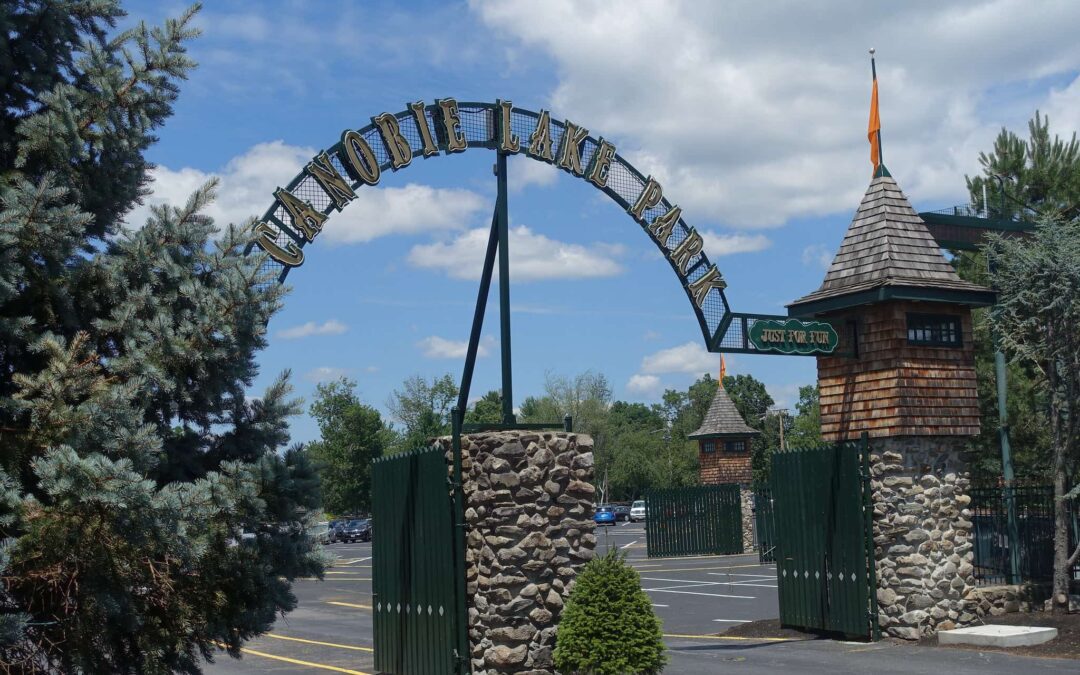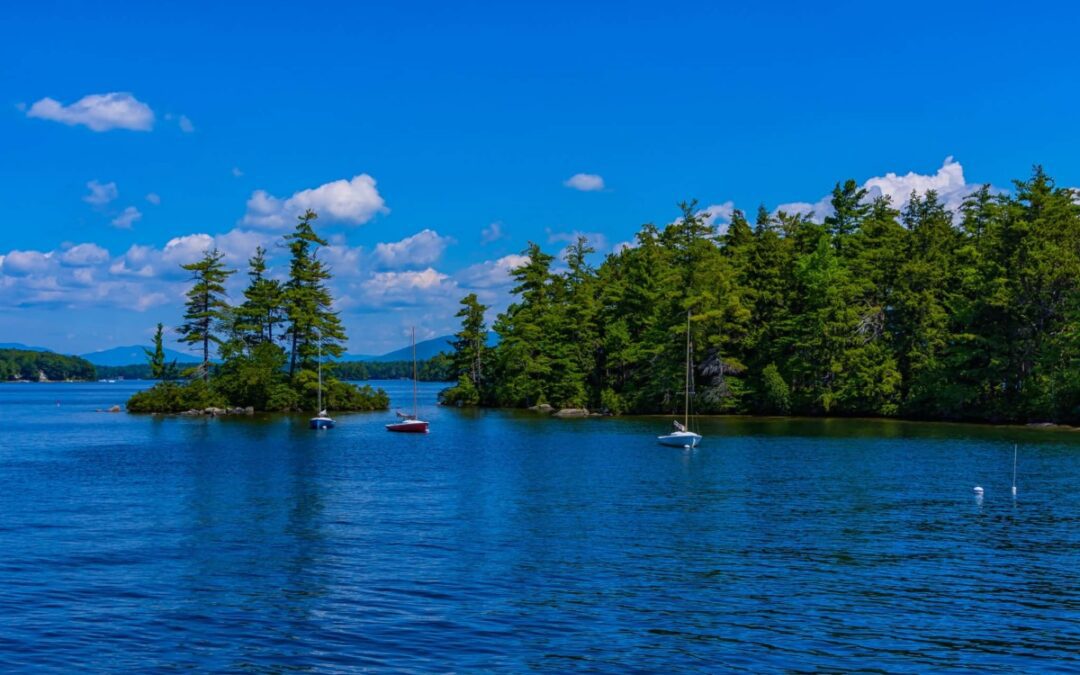
One of the first signs of spring in New Hampshire is the cheerful, wild crocus, which springs up in even the most desolate places. (Stacy Milbouer)
Head to these 10 places across the state to make the most of New Hampshire’s vibrant wildflower season.
There’s no better symbol for the end of our long New Hampshire winters than a cheerful, purple crocus poking out from a pile of last fall’s decaying leaves.
Simply put, we are wild about wildflowers in the Granite State, so we put together a handy guide to the flowers you might see and where you can see them on a spring hike. And while wild crocuses and skunk cabbage are among the first wildflowers to bloom, scores more will spring from our forests, fields, and even abandoned parking lots.
Our feral flora usually starts blooming in early spring, peaks in midsummer, and continues through the end of September, depending on where you are in the state. Wildflowers grow in many locations across New Hampshire, but primarily in mountainous areas, meadows, and wooded forests, especially in the Monadnock Region and the White Mountain National Forest.
Here are 10 New Hampshire locations where you can make the most of nature’s gift to the Granite State.
Where to see wildflowers in the White Mountain National Forest
Sawyer Pond Trail
This relatively easy four-mile, round-trip trail is edged with wildflowers, including lady’s slippers, red trillium, wood sorrel, partridgeberry, Indian cucumber root, and bluebead lily, to name a few. The best time for viewing is early June through early July.
White Brook Fen
Fens are spots where water moves downhill above or below the land and are related to bogs, which are fertile ground for wildflowers and plants. In this case, that includes sheep laurel, several species of rhododendron, and the carnivorous purple pitcher plant, which flowers in the spring and traps and digests insects. You might catch a glimpse of the floral phenomenon on this short hike.

The purple pitcher plant loves a good bog. It’s a carnivorous plant that catches flies and other bugs and digests them. (Stacy Milbouer)
Androscoggin Ranger Station
300 Glen Road, Gorham
National Forest employees have created this native plant and wildflower garden filled with local species of flora that grow in the mountain range, including high blueberry, bunchberry, and New England aster. There are also pollinators like milkweed and meadowsweet.

The New England aster grows almost everywhere in the state. Its name means “star” because of its pointy shape. (Stacy Milbouer)
Saco Ranger Station Viewing Garden
This garden is home to over 92 species of plants that grow in the White Mountains. It’s broken down into three parts, according to the specific environment in which they thrive. Wildflowers include red trillium, flat-topped aster, Canada lily, witch hazel flower, and stiff sunflower.
Crawford Notch State Park
This 5.3-mile loop spreads out over 5,775 acres. Starting in June, you’re likely to see painted trillium, pink lady’s slipper, Canada mayflower, hobblebush, northern bush honeysuckle, and delicate, white mountain avens.
Lupine Towns
The tall and lithe lupine might just be New Hampshire’s favorite wildflower. These exotic pink, purple, white, and blue posies transform ordinary fields into 3-D Impressionist paintings from late May to early June in the towns of Sugar Hill, Franconia, Easton, and Bethlehem each June. White Mountains New Hampshire has created a free, self-guided daylong Field of Lupine Tour.

New Hampshire folks love their lupines and make a day out of seeking them out. (Hans Isaacson/Unsplash)
Where to see wildflowers in Southern New Hampshire
Beaver Brook Association Wildflower Trail
Welcome to one of the nicest places to take a walk in Southern New Hampshire. With over 2,200 acres, this non-profit nature preserve has 35 miles of trails, including its wildflower trail. The .3-mile walk winds through fields of wildflowers, wetlands, and forest dotted with over 40 varieties of wildflowers, including white bloodroot, yellow marsh marigolds, and skunk cabbage, named for its pungent scent. To see photographs and descriptions of some of the wildflowers you might see at Beaver Brook, click here.

They smell bad, but skunk cabbage is indeed a wildflower and is one of the early signs of spring in New Hampshire. (Townsend Walton/Unsplash)
Bear Brook State Park
With 60 miles of trails throughout 10,000 acres, Bear Brook presents plenty of opportunity for wildflower gazing. Among the species you might see is New Hampshire’s official wildflower, the Cypripedium acaule, more commonly known as the pink lady’s slipper, a member of the orchid family. The flower gets its name from its resemblance to an old-fashioned woman’s shoe and can be identified by its “two opposite basal leaves with conspicuous parallel veins and large solitary pink flowers at the end of a long stalk,” according to the University of New Hampshire Extension. There’s a myth that it’s illegal to pick these beauties, which bloom from late April through July in dry, sandy soil, like that under pine trees. But, while it’s not recommended, you won’t end up in jail or with a huge fine if you do.
Rhododendron State Park and Little Monadnock Mountain
This park has a 0.6-mile Rhododendron Loop Trail through a natural 16-acre grove of wild rhododendron maximum, including a rhododendron tunnel and a hiking trail to the summit of Little Monadnock Mountain. The peak bloom of the blush-pink, fragrant flowering bushes is mid-July. However, it’s worth a trip from early spring through the first frost when the park’s wildflower trail is in constant bloom.

In New Hampshire, we have a whole park dedicated to rhododendrons. (Yoksel Zok/Unsplash)
Monadnock State Park
So many Granite Staters have hiked Mount Monadnock, the most-climbed mountain in New Hampshire and the second most in the world, according to the Society for the Protection of New Hampshire Forests. But hikers may have missed the park’s wide variety of wildflowers, especially along the 1.9-mile White Dot Trail, which is the most direct, but somewhat arduous route to the summit. Less steep but just as wildflower-rich is the 2.2-mile out-and-back Dublin Trail to the top.
Learn more about wildflowers in New Hampshire
On the New Hampshire State Parks’ website, Interpretive Ranger Simone Maule compiled a list with photographs and descriptions of the types of wildflowers you can see in the state this spring.
The University of New Hampshire Cooperative Extension has a chart of meadow wildflowers in Southern New Hampshire and their bloom dates.
Wildflower.org, the Lady Bird Johnson Wildflower Center’s website, has information about wildflowers and their conservation in New Hampshire and throughout the country.
This article first appeared on Good Info News Wire and is republished here under a Creative Commons license.

Could you eat this much ice cream after walking 1,100 miles? Some Appalachian Trail hikers try
Sam Cooper had just trekked 7 miles (11 kilometers) through a rain-sodden stretch of the Appalachian Trail when he sat down outside a little country...

July 4 fireworks displays, parades, & other events in NH
Celebrating American Independence in New Hampshire is easy with these July 4th events, including fireworks displays, and parades. Here’s what you...

North Country fitness: 5 local gyms redefining wellness and community in 2025
In Northern New Hampshire, wellness isn’t just about gym memberships — it’s about access, support, and spaces where people feel seen. Whether you're...

Northlands Music & Arts Festival returns with a stellar 2025 lineup
Experience New England's premier boutique festival as Northlands returns with jam legends, local art, cozy camping and mountain magic this June...

6 fun facts about Canobie Lake Park in New Hampshire
Wooden coasters, gold stars for celebrities, and Stephen King's muse—uncover six fun facts about historic Canobie Lake Park. As spring approaches in...

6 best places to go fishing in New Hampshire this summer
With summer on the way, it’s time to start planning your next fishing trip. These are six of the best places to go fishing in New Hampshire....





